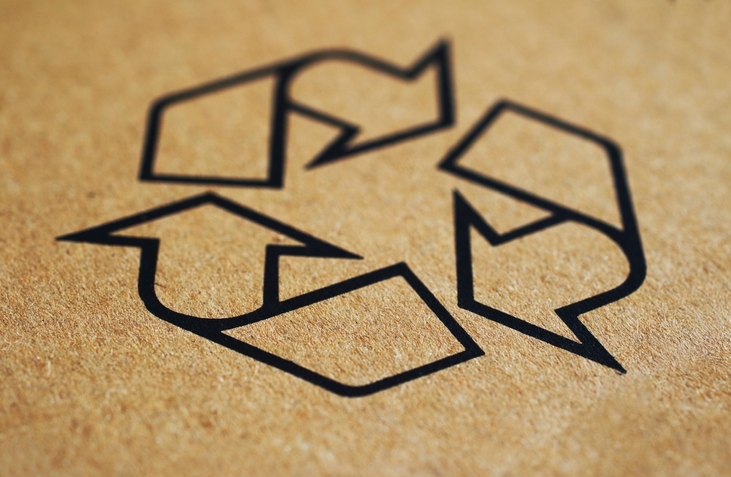Packaging – the journey from a linear to circular economy
Jude Allan, Chair of IOM3 Packaging Society looks at the importance of packaging in society and why embracing change is essential to help solve some of the challenges ahead.

In a recent panel discussion, I was reminded of the fact that when I studied materials science and engineering in the early 90s there was no mention of sustainability, recycling, or the reuse of materials in the curriculum. I now realise that this was very much a symptom of the linear economy – ‘make, use, dispose’ that has been a consequence of mass consumerism.
The panel discussion was part of a conference for undergraduates considering a career in sustainable packaging. This is a generation who have grown up in a world where climate change, plastic pollution and sustainability are very much a topic of everyday conversation and they are thinking about things in a fundamentally different way. There is a realisation that behavioural change is essential for a more sustainable future and we are at a paradigm shift in the awareness of the public. These young people are an inspiring sign of how that change can drive an industry forward. They don’t just want a career in packaging they want to be able to make a real difference to how packaging affects the planet. In effect they want to make a circular economy the norm, thinking about maintaining value and subsequent uses of materials.
Sustainable thinking
It made me think about the pace of change in sustainability over my career in the past 20 years working at a creative packaging design agency. The change in emphasis of packaging design briefs through that time has been a representation of the changes in the overall awareness of sustainability. As with general society, brands engaged with the subject of sustainability at different rates, some were trail blazers while others had different priorities.
Initially marketing briefs rarely included any consideration or even mention of recyclability or material usage. This was often considered to be something that the clients packaging team would take responsibility for, it was definitely not a primary requirement and where it was featured it was mostly about cost saving or value engineering. Meanwhile designers were often keen to think about designing more environmentally friendly packaging but at the same time they enjoyed all the bells and whistles that allowed them to bring out the best in their design work.
Over time sustainability started to become a consideration in design briefs, different brands would approach sustainability in different ways, new brands will now often start off with sustainability as one of the core values of their brands whereas older more established brands have incorporated it into their brand values over time. The reality is that sustainability has became a stronger requirement for all brands as consumers started asking and then demanding it.
It’s also interesting to note that the more successful projects were always those where the packaging design and production teams were engaged at the beginning so the whole project was more holistic and joined up across the business. This approach enabled sustainability to become a much greater factor in projects as the materials experts were involved in projects from their initial stages.
Over the same time household recycling has also dramatically increased, waste management companies have developed their processes and equipment to enable efficient and effective management of the material resources so they are not just waste materials but materials with value.
Packaging law
Legislation is also changing, I started working in the Packaging Industry in 1996 just as the Essential Requirements for Packaging Directive was introduced. In effect, packaging waste was recorded and measured for the first time and evidence of that measurement was provided through Packaging Waste Recovery Notes (PRNs). The system, while not perfect, has done what it was designed to do, it has increased recycling rates. The next group of major changes that will effectively replace this system are now being discussed and debated and IOM3 continues to contribute to those debates on the plastic packaging tax, extended producer responsibility (EPR) and deposit return scheme (DRS).
What I observed in the undergraduates at the conference was talented value driven individuals intent on making a difference, they see the challenges that we have created and they know that they are the ones who need to fix the problems they are inheriting.
They are also more prepared to embrace the idea of a circular economy, of course they want to develop and be successful in their careers but not at any cost.
The future is bright
It’s exciting to see the challenges ahead, we’ve come a long way but there’s a huge amount still to be done. Embracing change and allowing the next generation to challenge our way of thinking and drive that change is an essential part of that process. Shifting our working practice and accelerating the move toward a more circular economy and away from a purely linear route is an important part of the changes ahead.
In my own career, I spent nearly 20 years at a creative packaging design agency where I would beat the drum for how to use materials well and effectively and to explain what happens to materials in the recycling process. The progress of change in packaging design briefs through that time was a slow but steady progression, as with general society brands engaged with the subject of sustainability at different rates, some were trail blazers while others had different priorities.
Jude Allan, Chair of IOM3 Packaging Society

